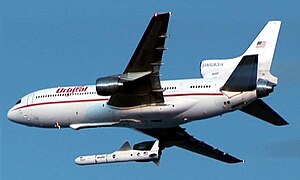You will no do 1500fpm through 390 holding any airspeed let alone .82. Does the CRJ have magic wings that cause best rate of climb to go UP (ref IAS) with altitude?
The approach speeds are roughly the same as almost everything else. You're just pulling this out of anecdote land. Which is what pilots do best. Ref numbers are almost always in the 130s, which is the same as most of the 73s, a320s and most other jets.
Yeah, you're right, I'm not pulling this out from my own personal experience, just pulling it straight out of my ass. Just curious, how many hours do YOU have in a CRJ? Have you been "through the mill" at an airlines training department in, oh, say the last 6 months? Do you have access to speed cards that show you the ref speeds of a typical -200, or a -700, or even a -900? I do, and I'm actually looking at my company data.
And best rate of climb, as you should know, is NOT just a function of available wing. It's ALSO a function of available thrust. And as speed increases, so does the amount of thrust available.
An excerpt from one of the Navy pieces I read to wrap my head around a turbine engine better.
If we only consider the change in airflow velocity in the thrust equation, then thrust decreases with an increase in airspeed. Remember, that the thrust equation consists of two variables: mass (m) and acceleration (vfinal - Vinitial). As mentioned, the difference between inlet and exhaust velocities decreases as the aircraft increases speed. However, more and more air is being rammed into the inlet, increasing the mass and pressure of inlet air. This offsets the decrease in acceleration and results in a neutral effect or slight increase in thrust at subsonic airspeeds.
Source:
http://www.netc.navy.mil/nascweb/api/student_guides/Eng_studentguide_18Jun2014 Change 1.pdf
I had a much longer reply posted, but decided to delete it. With your attitude, well, with your crass attitude, I decided not to post it. I'd be more than willing to discuss this, and why I believe the airplane that I fly, from my personal experience, climbs at a faster rate when going at a faster airspeed with someone who doesn't post things like "Does the CRJ have magic wings that cause best rate of climb to go UP (ref IAS) with altitude?"
Edit to add: If you can get ahold of some speed cards for the -200, have a peek at them. The approach speeds are higher than a lot of other equipment out there, at typical weights. I commute on 73's, 75's, 76's and 77's. They are slower on nearly every approach, by just about 10kts.




